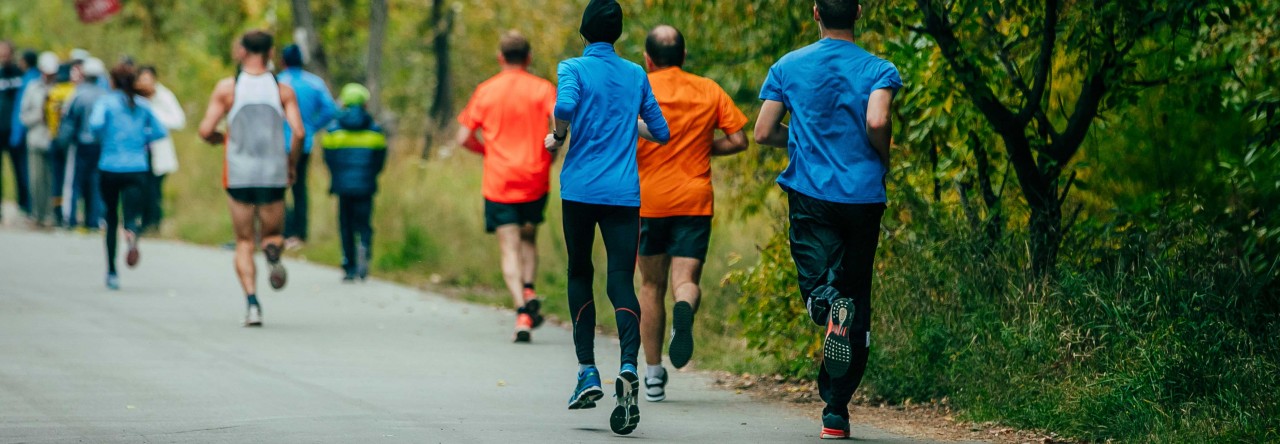The running enthusiasts at Sydney Northern Beaches should probably know that Pub2Pub is on 27 August and the serious training for it should start in around two weeks from this post (10 weeks training program would do).
Today I received an email from Pub2Pub organisers with some interesting content by Ironman legend Guy Leech. Mr Leech has prepared a series of very useful videos on Youtube to guide runners to prepare for a running race. While appreciating his great work and encouraging everyone to watch the videos, I would like to write this post on the first video which is on techniques, my favourite topic of discussion and the reason I created this small business, Progressive Running for improving public awareness and knowledge on the importance of this matter.
Here is the video:
I have to admire that he starts with technique in this series since technique comes prior to training. On this topic he raises the following main points in the video:
- Selection of correct running shoes to avoid injury
- Tips on good posture
- Slight knee lift, quick turn over, and concentrate on cadence. Aim for shortest contact with the ground as possible
Here I am going to write my opinion on these points. My core opinion is constituted based on Pose Method of running and some other science-based sources as the reference for commenting on other techniques and approaches to efficient running. Up to this moment my take on Pose is that it is science and I faithfully follow what science states as true.
Selection of correct running shoes to avoid injury
Blaming shoes as the first cause of injury is not what I find a correct approach however it is very common and my personal experience tells me public opinion is with this notion. To my research the first culprit is the way we run and the pattern of training.
Have a read here for more information on this: http://www.drnicksrunningblog.com/runners-create-injuries-not-shoes/
The reason public opinion – and that of successful athletes like Guy Leech – is set towards blaming shoes as a very likely cause of injury lies in this simple fact that overwhelming majority of recreational runners push off the ground at running. When there is a push-off involved, selection of shoes matters because the way shoes transfer forces around could apply pressure on some parts of legs more than the others and those parts might wear out quicker than expected, meaning an injury might happen in those areas. The alternative to push-off is to use gravitational torque for propulsion. Doing so shifts the pressure to bigger muscles in leg and also results in bringing all so-called metrics into the right range: Shortening ground contact time, having cadence as high as 180 strides per minute, and forefoot landing, etc.
Tips on good posture
These are the last things I usually mention to my clients. They are trivial and some of them are automatically sorted when the main concepts of Pose running are materialised into one’s running gait. For instance, arms are only for balance at Pose running whereas some coaches, if not many, emphasise on moving or pumping them back and forth along the body. The reason is, moving arms back and forth helps with “pushing off the ground”. When the standing foot is pushed down to the ground to propel the runner, that leg will trail behind the runner. For a better trailing, it is helpful to balance out the trailing leg’s weight with a forward-reaching arm.
Slight knee lift, quick turn over, and concentrate on cadence. Aim for shortest contact with the ground as possible
Back in 90’s, at analysing fast sprinters’ running techniques, the running coaches came to think that knee drive is what helps the sprinters run fast. Later on it was revealed, as per what Nicholas Romanov the founder of Pose Method says in one of his books, the sought after effective component was the unfolding of knees and the swing from it, not the knee drive.
One of the apparent factor by which pose runners are well known is their knees staying low. Driving or lifting knees is an up-tiring and unnecessary technique (usage of hip flexors). One can achieve the same time and pace at running without doing so.
Raising the point about cadence goes with my/Pose opinion on running, and cannot thank Mr Guy Leech enough for mentioning that. Cadence is like checking temperature of a patient to tell how good his or her health is. If cadence is below 180 strides per minute, there is a push to spot when analysing the video of somebody’s running. What could not fit in Mr Leech’s short video is how to achieve a right cadence. Mr Leech also says that ground contact time should decrease. That is true. This is aligned with the point on cadence too. In fact they are the same thing in Pose method; however the question is how to achieve it? I wrote about it in more detail at this post.
Decreasing ground contact time while pushing off the ground contradict each other. Simply because for a proper push one needs to hold and press a foot down long enough to propel as fast as needed. How such runner can still move forward as fast if the push part is going to shorten?
Last word on this matter, not the least
Running is a natural sport and everyone knows how to run but running ‘efficiently’ is a skill. Application of efficient running is not limited to the race day, it comes more useful at training period because majority of those runners who experience injuries, happen to be injured during their training period as opposed to the race day.
Public opinion on running technique is not based on science and mostly established based on athletes’ anecdotes which are not necessarily scientific. On the other hand, knowing the target does not certainly help achieving it if not provided the right approach too. For instance, Mr Leech’s point on ground contact time is correct, but how to achieve it takes a full lecture.
There are experts and successful athletes like Guy Leech that sport enthusiast try to copy their training routine, their diet, and their techniques, etc, but beware that some of their doings may not be ‘universal’. They surely have superior genes that help them recover faster than an average healthy person so if they do something wrong or inefficient that trades health for speed, their body’s skill at repairing the tears is much better than most of us. If we do the same thing we might end up in hospital :) That is why I believe in finding and teaching things that work for everyone, or in other words: are Universal.


Comments are closed.